Roberto Matta (1911-2002)
Do you think you may own a painting by Roberto Matta?
Get a Matta Certificate of Authenticity for your painting (COA) for your Matta drawing.
For all your Matta artworks you need a Certificate of Authenticity (COA) in order to sell, to insure or to donate for a tax deduction.
Getting a Matta Certificate of Authenticity (COA) is easy. Just send us photos and dimensions and tell us what you know about the origin or history of your Matta painting or drawing.
If you want to sell your Matta painting or drawing use our selling services. We offer Matta selling help, selling advice, private treaty sales and full brokerage.
We have been authenticating Matta and issuing certificates of authenticity since 2002. We are recognized Matta experts and Matta certified appraisers. We issue COAs and appraisals for all Matta artworks.
Our Matta paintings and drawings authentications are accepted and respected worldwide.
Each COA is backed by in-depth research and analysis authentication reports.
The Matta certificates of authenticity we issue are based on solid, reliable and fully referenced art investigations, authentication research, analytical work and forensic studies.
We are available to examine your Matta painting or drawing anywhere in the world.
You will generally receive your certificates of authenticity and authentication report within two weeks. Some complicated cases with difficult to research Matta paintings or drawings take longer.
Our clients include Matta collectors, investors, tax authorities, insurance adjusters, appraisers, valuers, auctioneers, Federal agencies and many law firms.
We perform Roberto Matta art authentication, appraisal. certificates of authenticity (COA), analysis, research, scientific tests, full art authentications. We will help you sell your Roberto Matta or we will sell it for you.
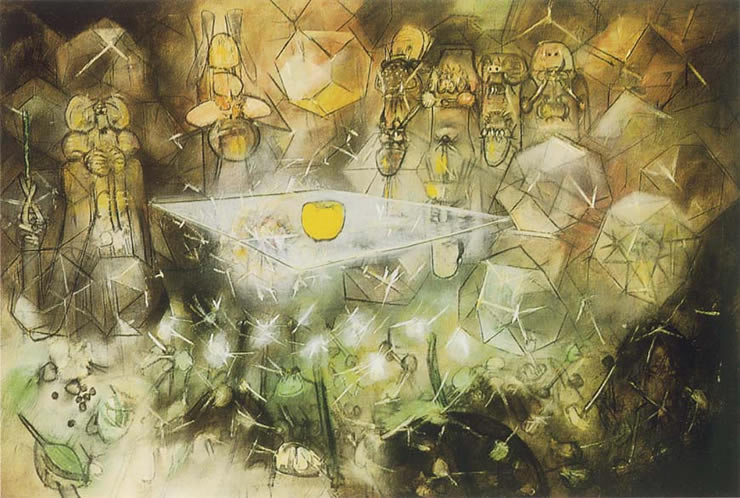
Roberto Matta was a Surrealist Chilean artist born in Santiago, notably on 11/11/1911. Typically known just as “Matta,” he is perhaps Chile’s best-known and most famous artist, though he did not typically think of himself as a “Latin American” artist. Matta became a French citizen in the 1960’s and was even awarded the Nobel Prize in Art in 1995. Matta became well known for his cosmic Surrealist landscapes and paintings of space, as well as his use of political and social imagery within his compositions.

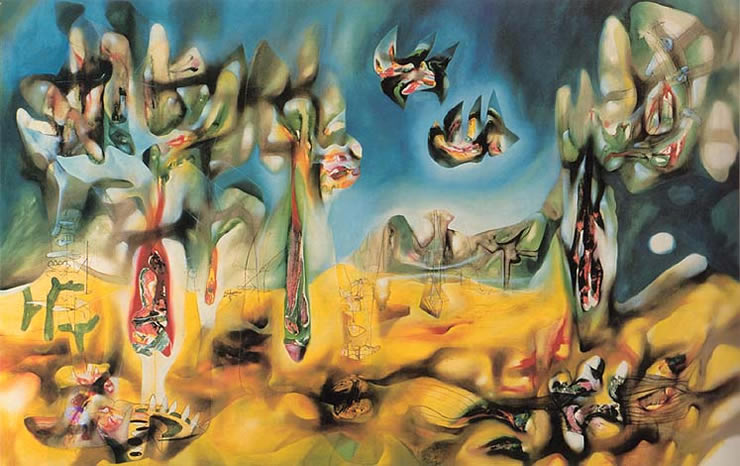

Matta initially studied architecture at the Catholic university in Santiago, however a 1933 trip to Paris landed him in the studio of Le Corbusier. He worked there in Paris at the famous architects’ studio as a draftsman for two years. During this time, Matta traveled to Spain to visit his Aunt and during his visit, became friends with fellow Chilean and poet Pablo Neruda. Through Neruda, Matta was introduced to Andre Breton and Salvador Dali—thus his lifelong love affair with Surrealist art began.
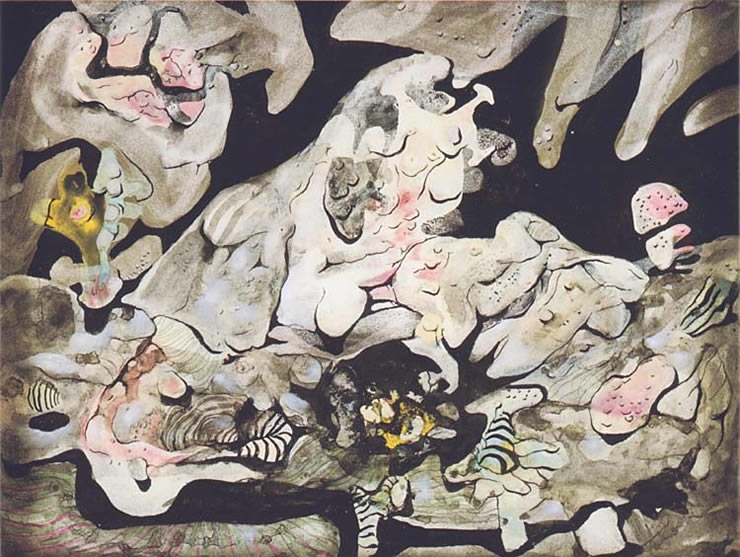
Matta worked in London briefly in 1936 and in 1937 Breton invited Matta to join the Surrealists. In 1938, Matta began creating drawings for the Surrealist publication “Minotaure.”
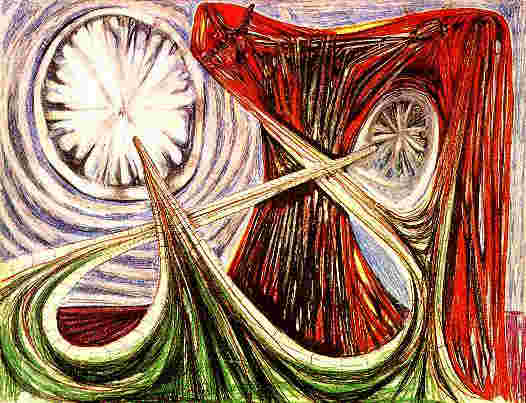
Much like the also popular Futurists of the time, Matta’s work was focused on movement as well as the fruits of progress, like machinery and high-tech imagery. During this time he was mainly creating drawings, however, in 1938 Matta slowly began to create more and more paintings while he was staying in Brittany. One of his first and most important oil compositions “Invasion of the Night” 1940 gained Matta great acclaim. “Invasion of the Night” also served as a pre-cursor to the work he would continue to create, using diffused light and colorful, and featureless backgrounds.
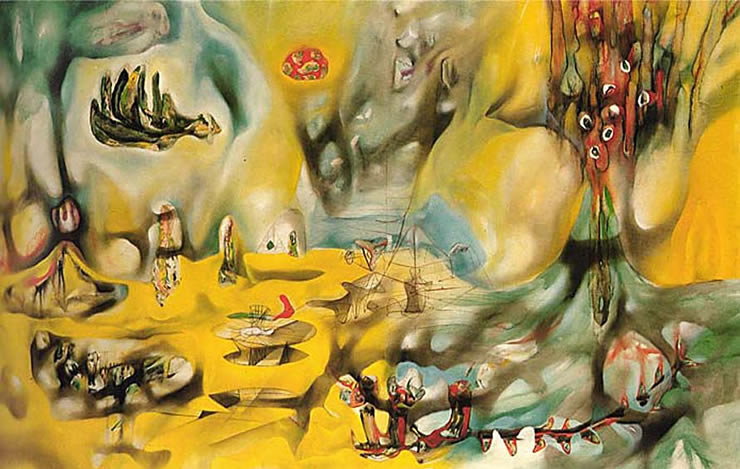

The onset of World War II forced Matta to flee from Europe during his switch from sketching to painting, and in 1938, he moved to New York. Matta did not exhibit in the United States until 1940 when he had his first show at the Julian Levy Gallery in New York City. Matta continued to work and live in the United States until 1948, and lived between South America and Europe through the 1960’s where he had homes in London, Paris and Rome.

There are many different themes that can clearly be seen in Matta’s work throughout the decades. In the 1940’s and 1950’s, his compositions reflected his ideas about politics.
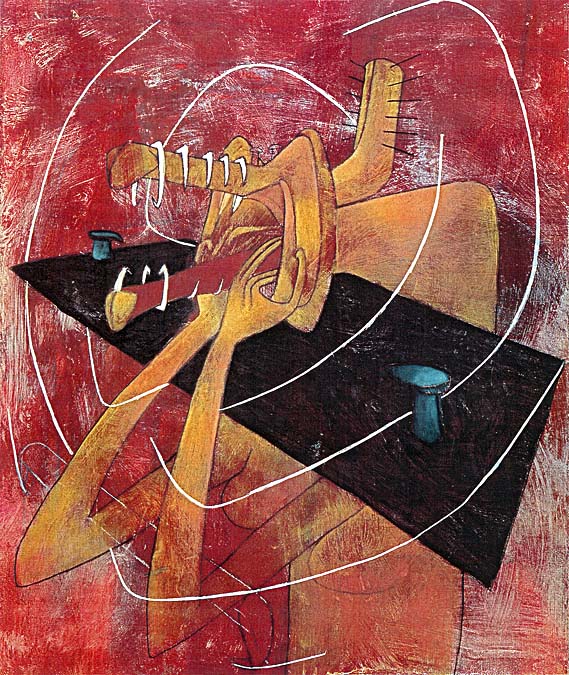
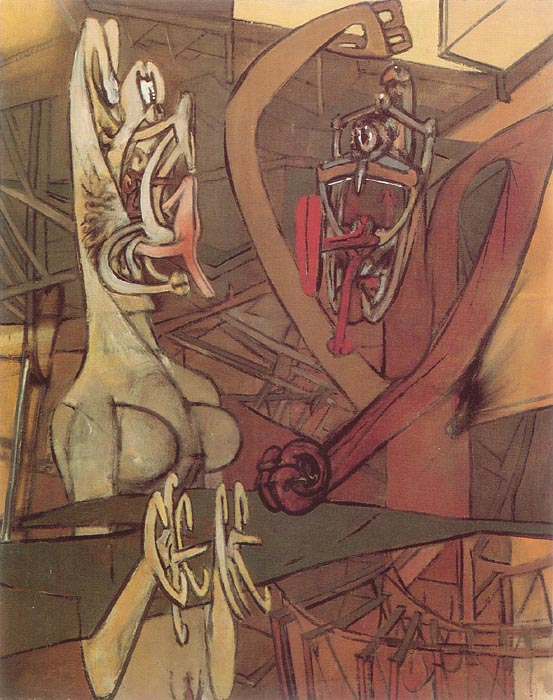

By the 1960’s, Matta’s bold infusion of clay onto his canvas gave his already Surrealist paintings even more dimensions. In the 1960’s, Matta would again return to politically themed compositions, focusing on themes like Vietnam, the American Civil Rights struggle and the Spanish Civil War.
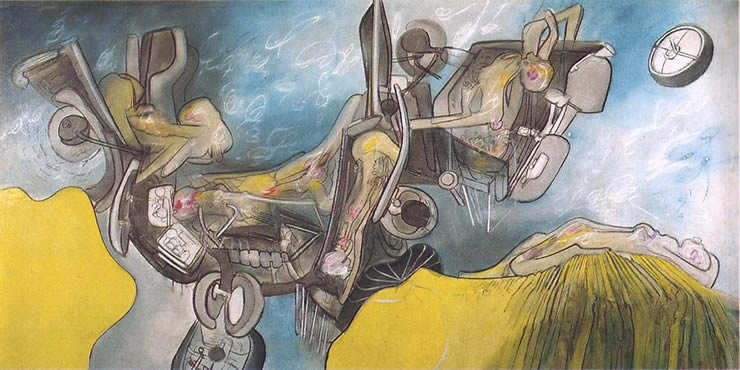
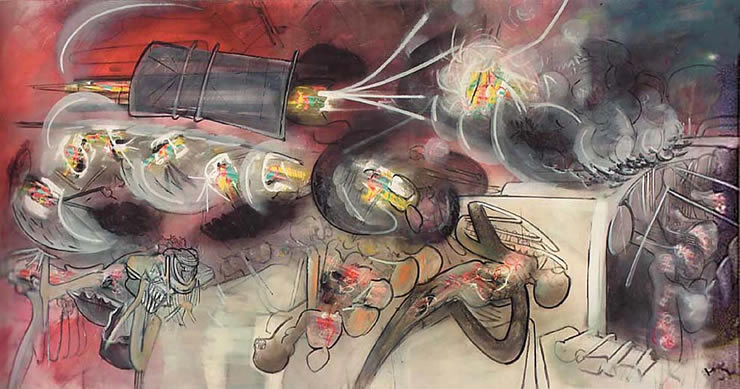
During this time, a shift can also be seen in his style. While he continued to paint in the Surrealist style, he also began to emphasize the idea of “automatism.” This idea of automatism, popular among the Surrealists, encouraged the artist to abandon conscious control of their compositions, thus creating spontaneous imagery and letting the subconscious lead. Much later in his career, from the 1990’s until his death in 2002, Matta created mainly aquatint etchings featuring sexual themes, as well as sculptures and ceramics and even a few large scale canvases.

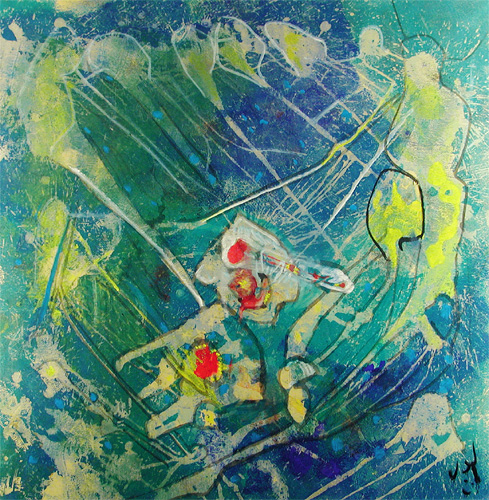

Though Matta was essentially expelled from the Surrealists in 1947 after a fight with Breton, he was truly one of the most experimental artists in the group. He would combine natural, organic elements with otherworldly life forms, machinery and strange creatures all in a cosmic landscape. Most of all, Matta experimented with Abstract forms within his Surrealist compositions. Despite the fact that he was no longer officially belonged to the Surrealist group, he continued to paint in that style his entire career. Art critics have said that Matta’s work can be divided into two different sections; apocalyptic painting and cosmic painting. Matta also stands out from any of the other Surrealists because his themes are political and social in nature, while most other Surrealists dealt with dreams and the psyche.
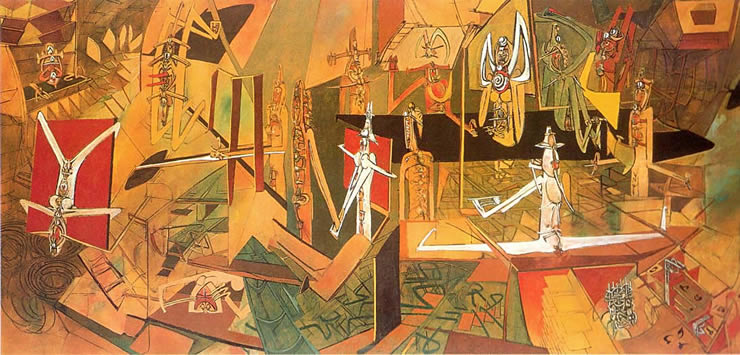
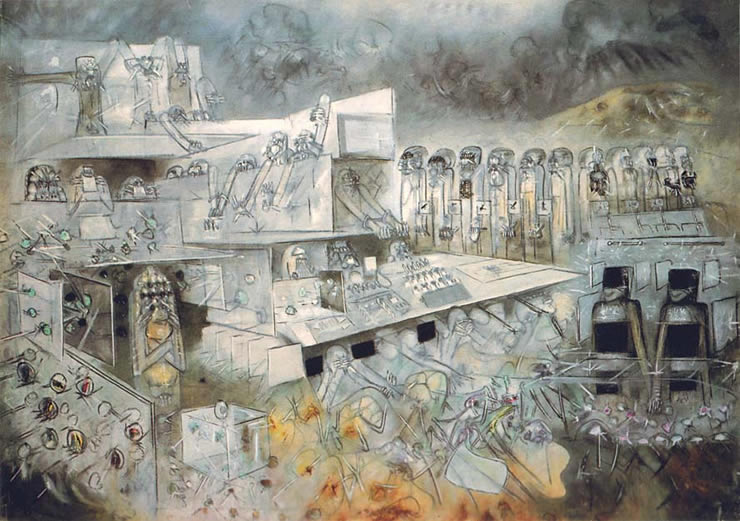
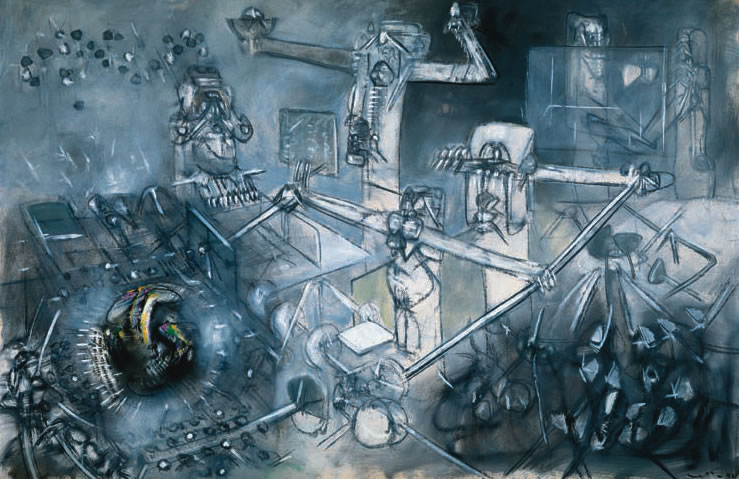
A self-described “wanderer,” Matta traveled and lived practically all over the world. Despite living and working all over South America, North America and Europe, he also traveled to Russia, Cuba and Scandanavia. Because he was so well traveled, the likelihood of a newly discovered Matta original surfacing on any of these continents is very great. Sketches, paintings, aquatints, etchings, sculptures, drawings and more are all likely mediums that this highly prolific artist used.



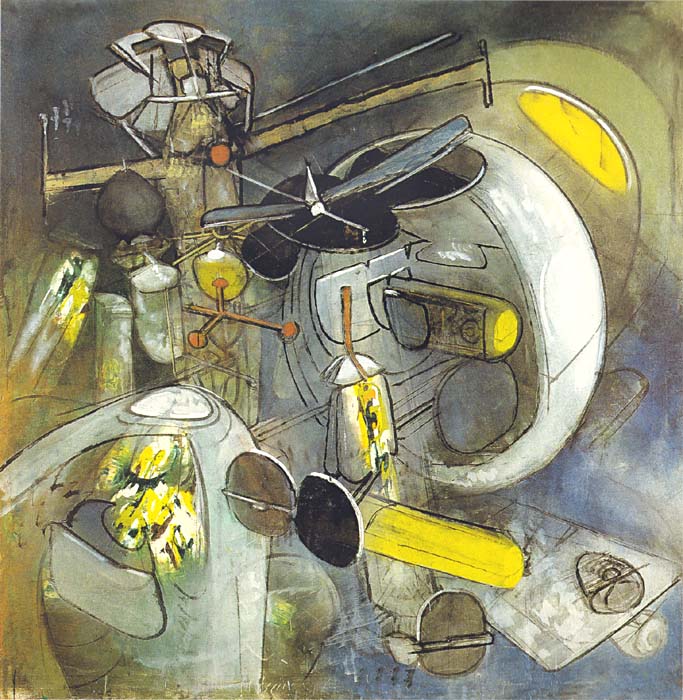
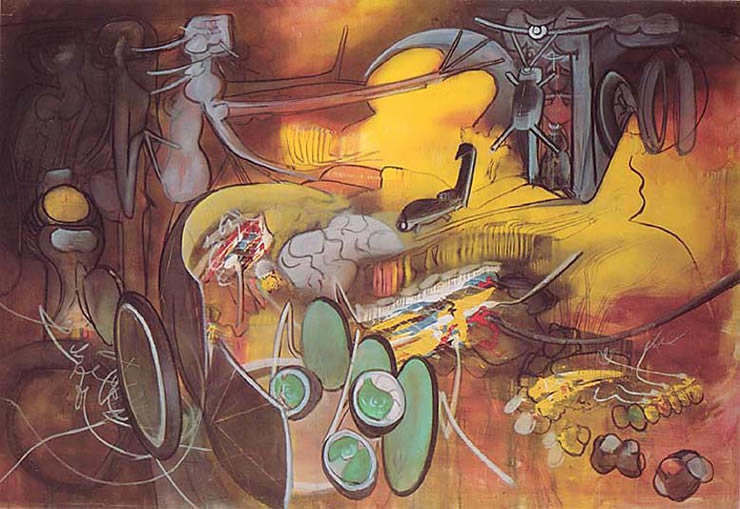
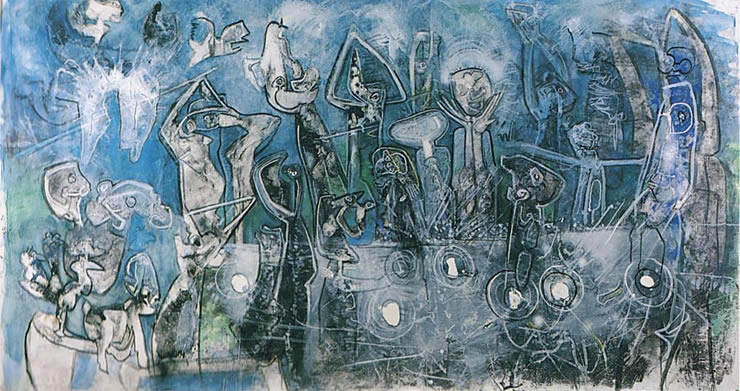
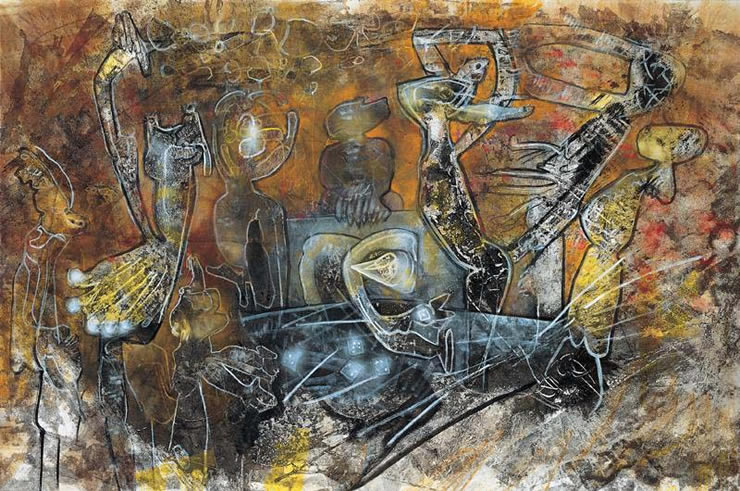
Still wondering about a cosmic Surrealist painting hanging in your home? It could be by Roberto Matta…contact us to find out.
Reviews
1,217 global ratings
5 Star
4 Star
3 Star
2 Star
1 Star
Your evaluation is very important to us. Thank you.
